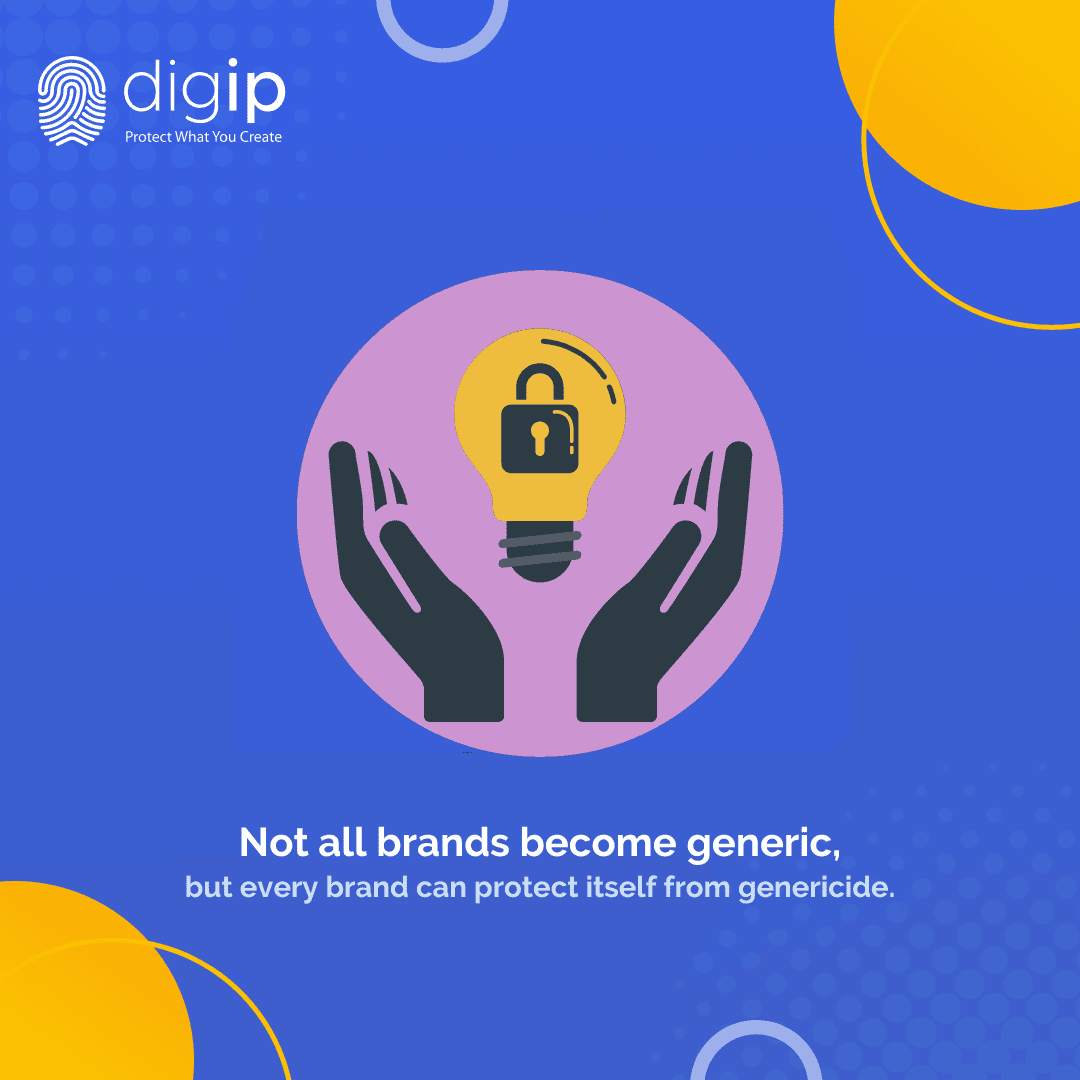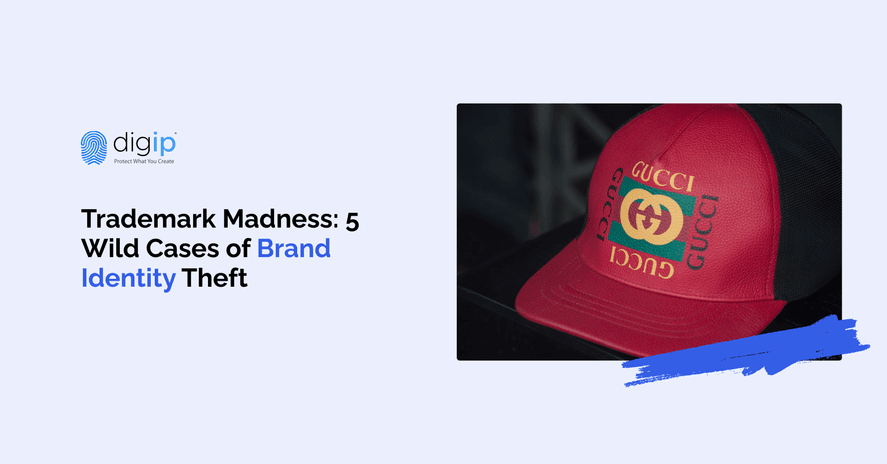
- Trademark
The Ultimate Guide to Generic Trademarks
Most business owners want their brand to be a household name. But with that comes the threat of genericization—when consumers stop seeing your trademark as unique. In this post, we discuss everything you need to know about generic trademarks and what they mean for your business.
What Is a Generic Trademark?
A generic trademark is a word or phrase that becomes the common term for an entire class of goods or services over time. They are not protectable under trademark law.
In other words, it's the 'brand' for a group of products. The word "aspirin" is one such example: it has become the common name for all products designed to relieve headaches, muscle aches, and pains, regardless of their brand.
Can Generic Terms be Trademarked?
In order to be trademarked, a word or phrase must have some level of distinctiveness from other words and phrases used to describe similar products.
Generic terms are not considered distinct enough for trademark protection because they refer to a whole class of products or services. Any business has the right to use generic terms in their marketing.
However, this does not mean that generic terms can't be used in trademarks at all. While it's true that you can't trademark a generic term on its own—for example, the word "sausage"—you could combine the word with other terms to make the mark more distinctive, like "Smokin' Steve's Sausages."
Generic Marks vs Descriptive Marks
Generic terms and descriptive terms are often mistaken for one another, but they are actually quite different.
While a generic term functions as a name for a class of products, a descriptive term only refers to a characteristic of the product. The generic term “glue,” for example, can be described using the terms "sticky" or "white."
If a descriptive term becomes associated with one particular brand in consumers' minds, then it earns a secondary meaning and can be registered as a trademark.
How a Registered Trademark Becomes Generic
The process by which a trademark becomes generic is known as genericide. It usually occurs when a brand attains such widespread recognition that it loses its connection with the company that first created it, and customers begin to use the name of the product in place of its original trademarked version.
Over the years, many companies have watched their brands become generic terms for the product or service they provide. Here are a few examples of big names that have lost their trademarks to genericide:
- Band-Aid, a brand of adhesive bandages. The trademark was originally owned by Johnson & Johnson.
- Post-it Note, a brand of adhesive paper notes. The trademark was originally owned by the Minnesota Mining and Manufacturing Company (3M).
- Hula-Hoop, a brand of wide, hoop-shaped toys. The toy was originally trademarked and patented by Wham-O.
- Bubble Wrap, a brand of pliable air-filled plastic packing material. The trademark was originally owned by Sealed Air Corporation.
When a trademark becomes generic, it can no longer be exclusively owned by the company that originally registered it. This is because the public has come to think of the word or phrase as simply describing the type of product rather than identifying a specific brand. As a result, genericide can have serious consequences for companies who lose their trademarks, including loss of profits and costly rebranding efforts.

Tips to Avoid Genericide
Even if your trademark is initially distinctive, it may become generic over time. Here are some steps you can take to prevent this from happening:
Pick a Strong Mark from the Start
Generic and descriptive trademarks are the easiest to lose. If you want to avoid the consequences of genericide, it's best to pick a strong mark from the start.
Here are some trademark types you can choose from:
- Fanciful Marks - These are made-up words that have never been used before in association with the product or service. These names are considered to be among the strongest kind of trademarks. Examples include "Adidas" for shoes and "Pepsi" for soda.
- Arbitrary Marks - These are commonly used words that have no literal connection to the product or service. For example, "Apple" for computers and "Camel" for cigarettes. The strength of these marks depend on how immediately associated the word is with the product; "Apple" for computers is an arbitrary mark, but "Apple" for produce would be weak because apple-the-fruit is more common than apple-the-computer.
- Suggestive Marks - These are marks where the consumer must use imagination, thought and perception to connect it to the product. A good example is "Tide" for laundry detergent; you need to think about how water washes away dirt in order get the connection. Suggestive marks are often used because they can be strong while still being easy to remember.
Don't Use Your Mark as a Verb
When you use your trademark as a verb, it no longer acts as a source identifier. Instead, people begin to associate the mark with the action or product itself. Take the phrase "google it," which is used as a synonym for searching the internet, as an example. To avoid this issue, make sure you never use your trademarked name as a verb in any advertising materials.
Expand Your Product Line
If your company offers several different types of products under the same brand name, people are less likely to start using your trademarked term as a replacement for the generic version of what you're selling. For example, if you sell both pens and markers under the brand name "MarkOn," people are less likely to start using the word "MarkOn" to refer to all permanent markers.
Avoid Altering the Trademark's Appearance
When you've decided on a trademark, you can stylize it using unconventional fonts or capitalization. For instance, if you own a clothing brand called "Agenda," you can stylize it as "AGENDA" or "agenda." This can help make the mark more distinctive.
Commit to the stylization and use it in all marketing materials along with the ® registered trademark symbol. Avoid altering the appearance of your mark in any significant way. This includes changing its spelling, using abbreviations, making it plural, or altering the capitalization of the name. This shows the public that it is not acceptable to use the mark in any other way.
Watch Out for Trademark Infringement
As a trademark owner, it is your responsibility to police the market and enforce your intellectual property rights.
To protect the value of your trademark, you'll need to make sure no one else is using it inappropriately.
Trademark monitoring services can help you do this by tracking how your mark is being used online and alerting you to any potential instances of infringement. If someone does try to appropriate your mark, take action against them as soon as possible—or risk losing it forever.
What to Do if Your Mark Has Become Generic
If your trademark has become generic, it can be hard to keep it protected as a trademark. It may be easier to cancel your current trademark registration.
You can do this by filing a Petition for Cancellation with the United States Patent and Trademark Office (USPTO). The petition must prove that your mark has become generic and is no longer being used as a trademark, because it’s now been used so generically that consumers no longer associate it with any particular brand.
If you succeed in proving genericide, your registration will be cancelled, the mark loses legal protection, and anyone will be able to use the mark freely.
Don't Let Your Mark Slip Away
As a brand owner, you may feel like you don’t have to worry about your brand becoming generic. But if we've learned anything from history, it's that no company is safe. We can't predict the future, but we can take steps to protect ourselves today.
Protect your brand today!
- Trademark



